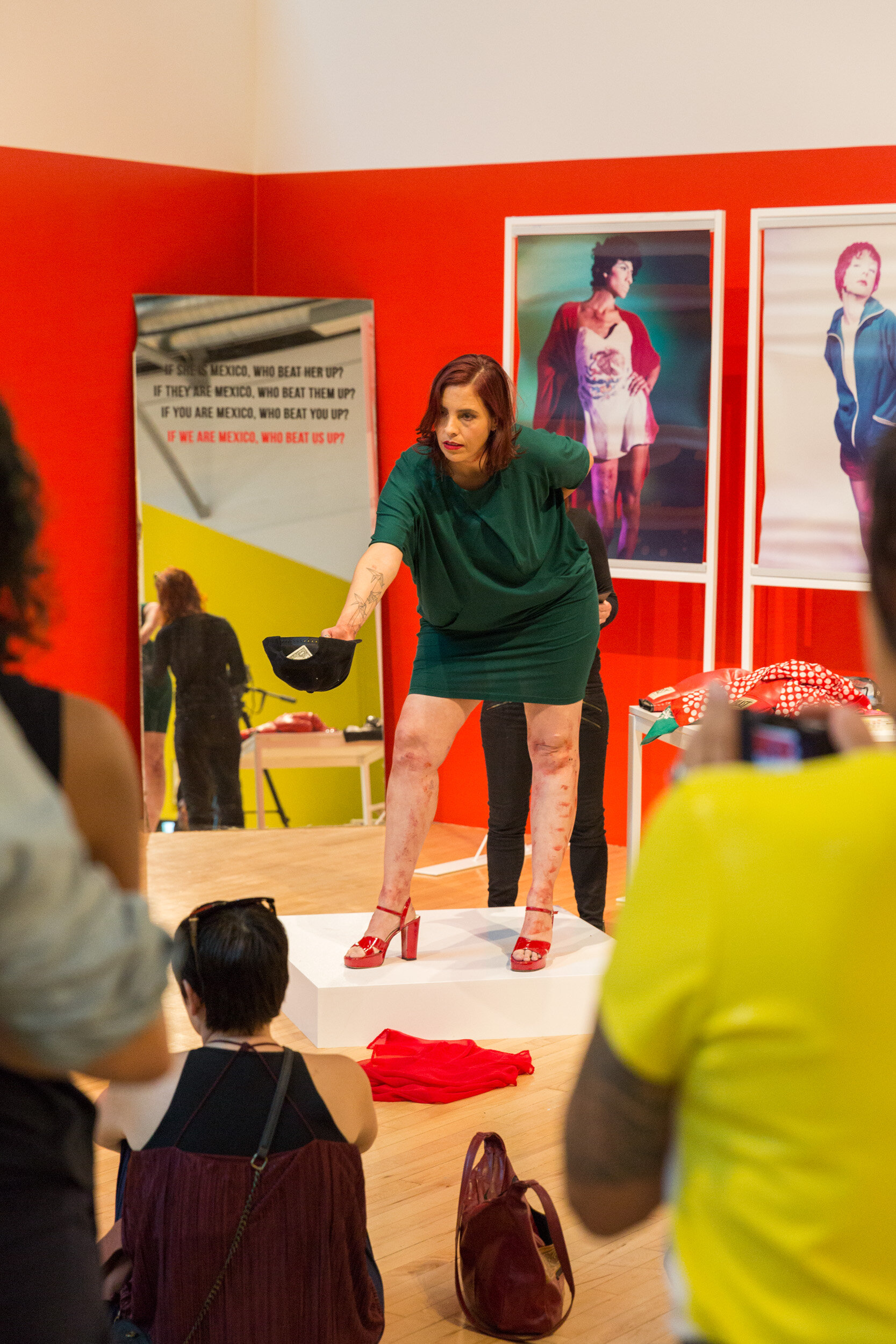If She is Mexico, Who Beat Her Up? If They are Mexico, Who Beat Them Up? If You are Mexico, Who Beat You Up? If We are Mexico, Who Beat Us Up? A performance by Lorena Wolffer and Amy Sara Carroll

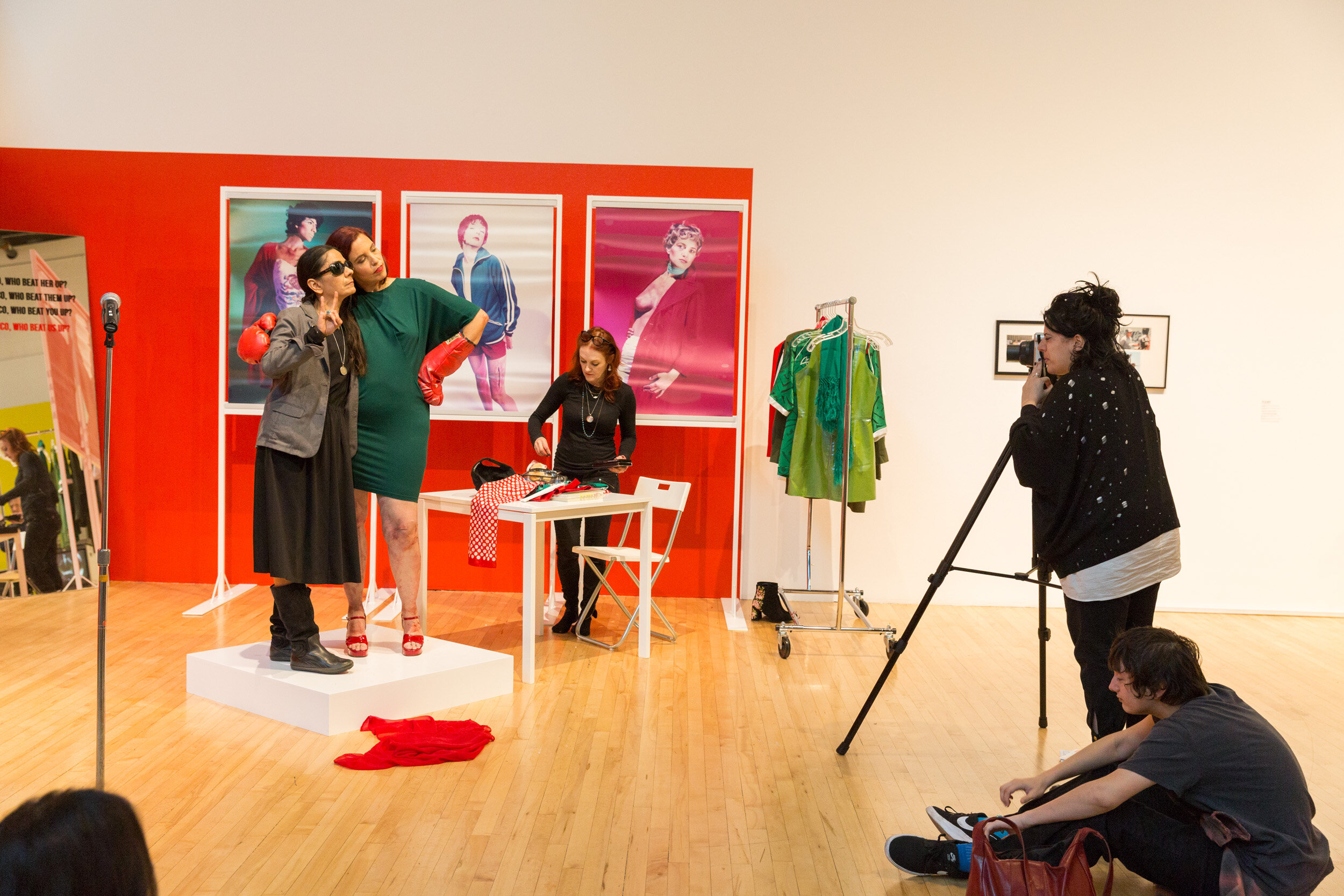
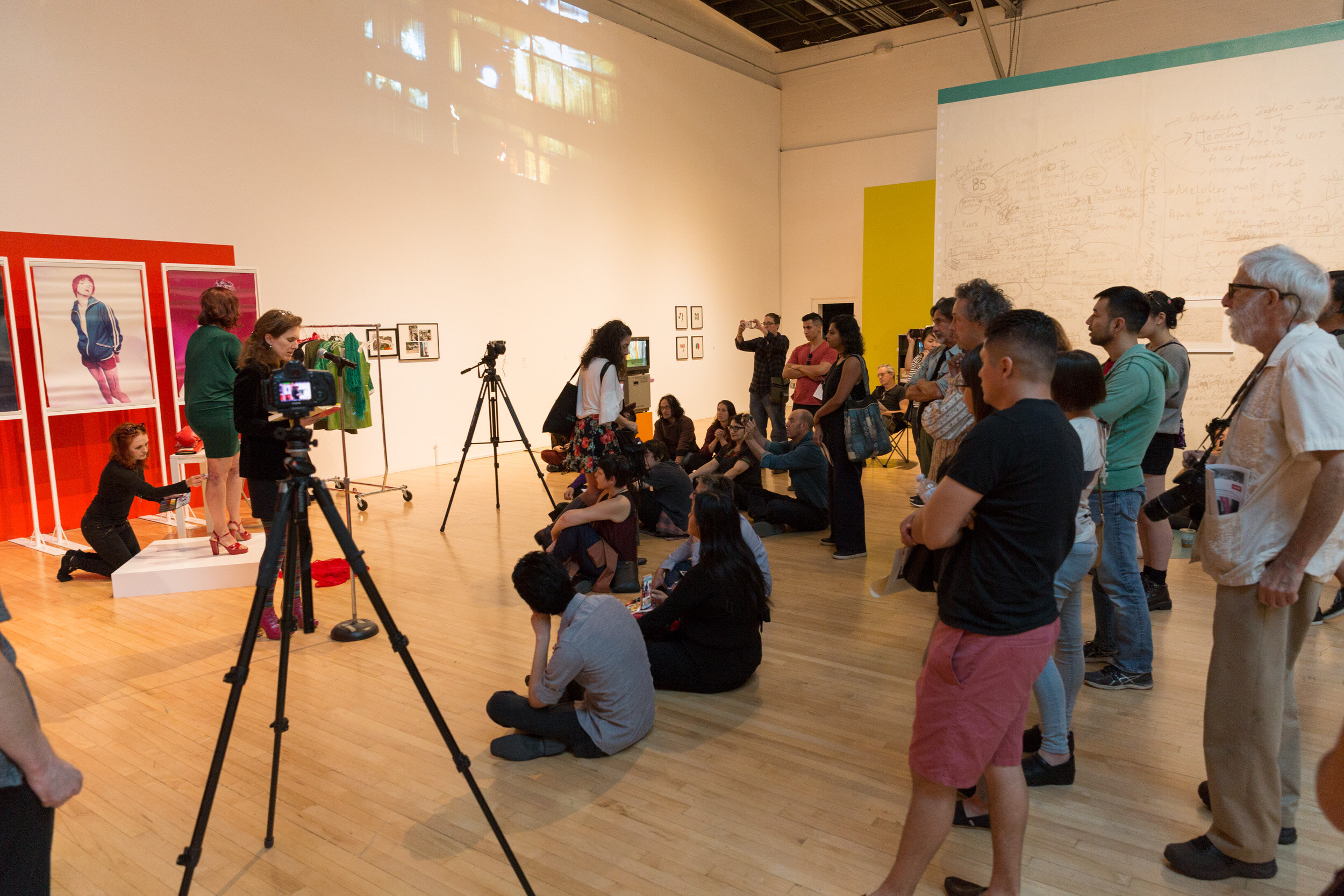
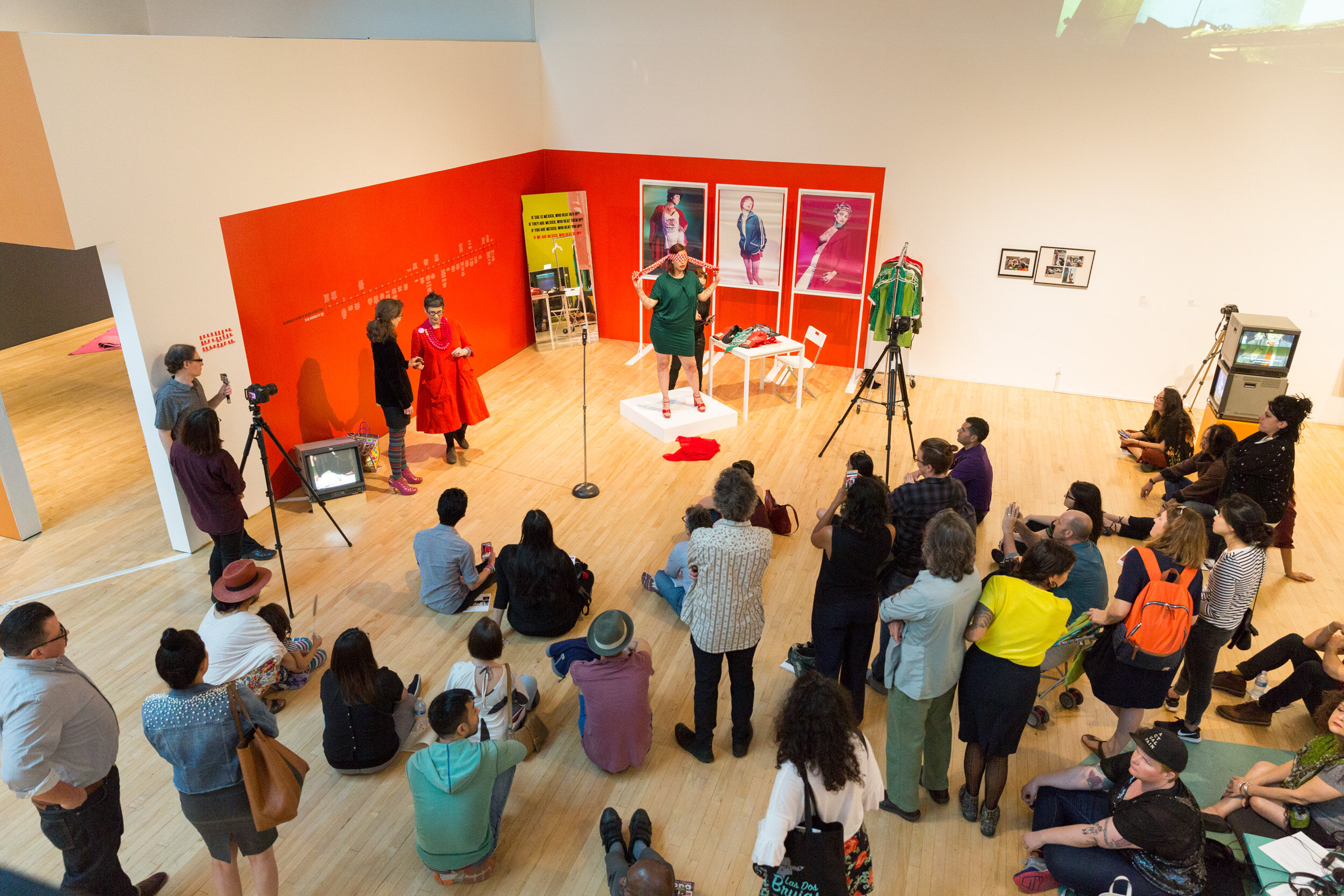
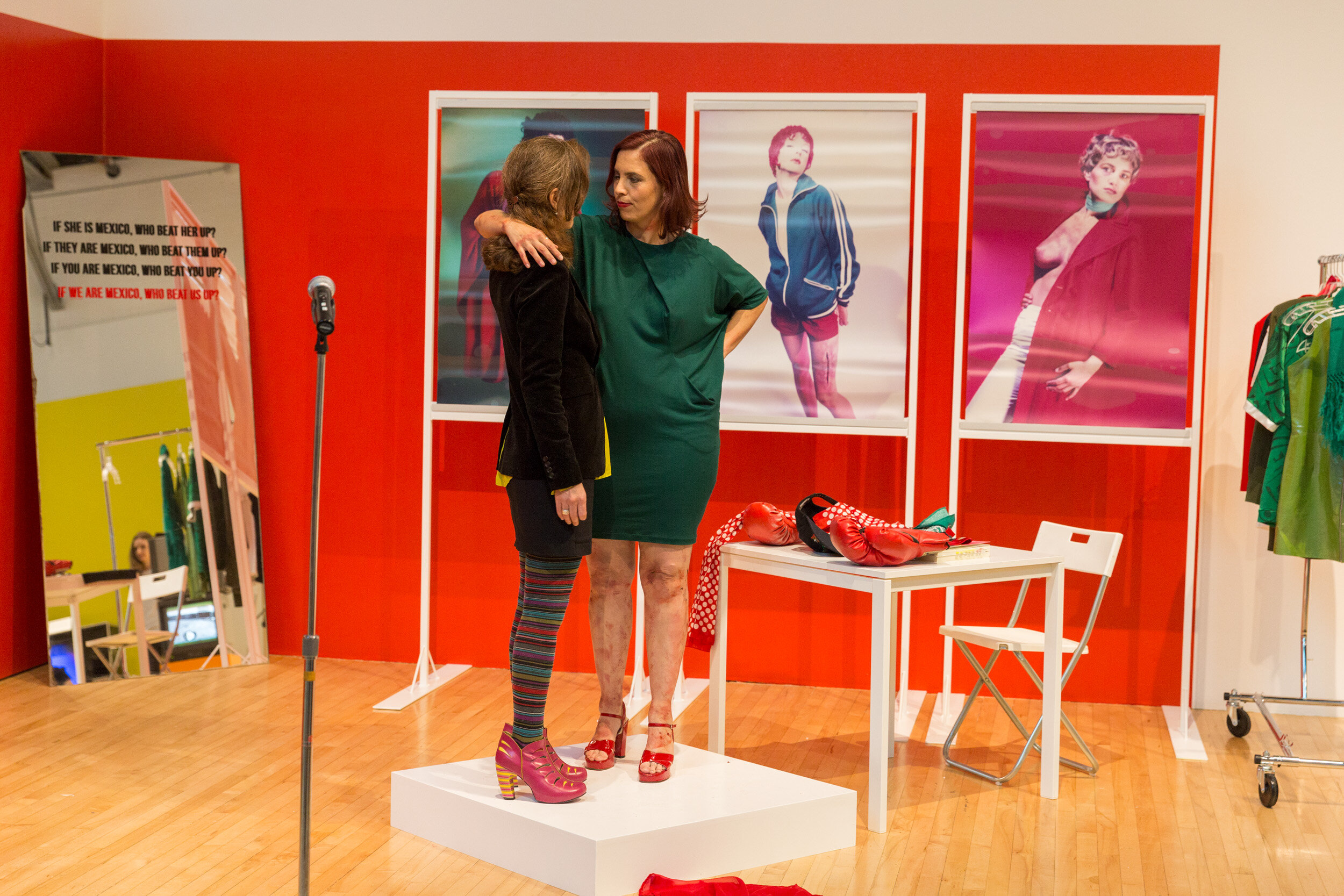
Sunday, January 14, 3pm
If She is Mexico, Who Beat Her Up?
If They are Mexico, Who Beat Them Up?
If You are Mexico, Who Beat You Up?
If We are Mexico, Who Beat Us Up?
A performance by Lorena Wolffer and Amy Sara Carroll
In If She Is Mexico, Who Beat Her Up? first presented in 1997, Lorena Wolffer sited her own body as Mexico’s social, political, and economic crisis. The artist as a battered high fashion model—a beaten country that insists on performing itself as salubrious, fashionable, and attractive on the world market—vogued different garments and props on a white runway and posed for photos with audience members. At the time, If She Is Mexico, Who Beat Her Up? allegorized the especially abusive and codependent relationship of Mexico and the United States, exacerbated by the 1994 passage of the North American Free Trade Agreement (NAFTA) and the demonization of Mexico in US immigration debates and US Congressional drug de-certification hearings. It cast audience members in an asymmetrical role with the artist insofar as they stood in contradistinction to Wolffer as “Miss Mexico.” Because the performance featured images of a transgender performer, it also implicitly posed the question, If They are Mexico, Who Beat Them Up?
Twenty years later, Wolffer in collaboration with Amy Sara Carroll, further gender-troubles the work’s title. Testing a range of pronouns, If She Is Mexico, Who Beat Her Up?’s rhetorical question mutates into other lines of inquiry that re-script relationships between Wolffer, critic/s, and spectators. Namely, during the re-performance, a make-up artist creates special-effects cuts, bruises, and wounds on Wolffer’s body while Carroll—one of the first scholars to write about If She Is Mexico, Who Beat Her Up?—voices the re-formulated question, If You are Mexico, who Beat You Up? Recounting the history of the performance, Carroll invites audience members in an echo of the work’s prior presentations to have their pictures taken with Wolffer. Interpellated spectators assume the mantle of the representation’s new question, If We are Mexico, Who Beat Us Up? Asked by Carroll to approach Wolffer and share the memories or events they associate with Mexico-US relations from 1997 through 2017, participant-observers co-perform the social body of Mexico becoming a collective action. Additional special affects: a timeline on the wall featuring key events that have taken place over the past two decades on both sides of the Mexico-US border serves as a periodizing guide for audience members to annotate or touch-up.
More info here.
